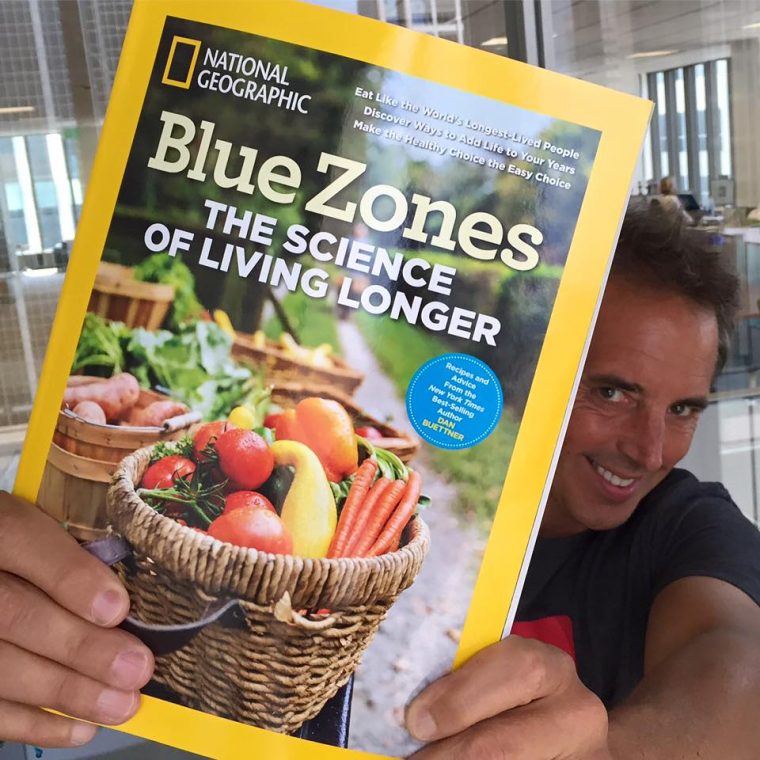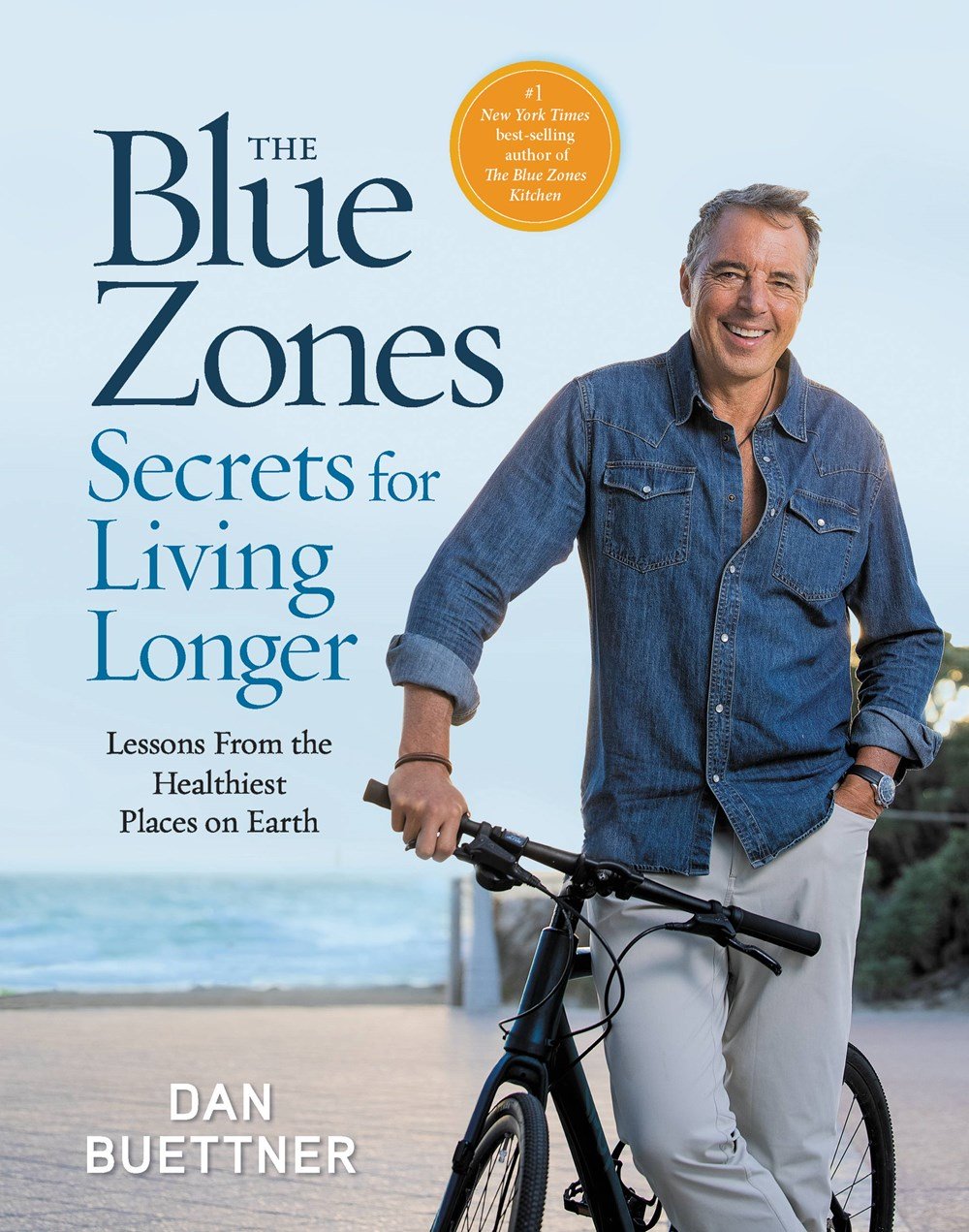I’ve done a lot of traveling in my time; for instance, I’m the kind of frequent flier who can sleep through takeoff, landing, and even switching terminals at certain airports. So I am usually not one of the airplane passengers who opens their window shade and looks out at the world.
Occasionally, though, I can’t help it (like when I’m flying past the Northern Lights), or I’ll find myself looking through somebody else’s window during descent. And whenever I do look, I’m either struck by the natural beauty of the world or I’m reminded of George Carlin’s observation that, from the air, houses look like little piles of stuff with covers on them.
But he wasn’t just putting a funny spin on the view from an airplane window. He was actually talking about us, about the implications of treating your house as “a place to keep your stuff while you go out and get more stuff.” By this period of history, we collectively have a TON of stuff…
… and I’m far from the first to say that it’s all slowly driving us crazy.
I’ve talked before about the Progress Paradox: the idea that, in the long view of history, people actually become less happy as societies develop and as more of their needs are consistently met. That’s pretty abstract and high-level, but the general principle trickles down into all sorts of everyday phenomena.
For example: consumer spending is one way of measuring a society’s progress, but consumerism only appears at the later stages of that progress. Folk wisdom has been quick to warn that “money can’t buy happiness,” but it takes time for people to understand and reconcile such ideas for themselves (and we often have to learn things the hard way).
Ask anyone who’s ever bought a Ferrari, a jet ski, a hot tub, or even just a cashmere sweater: they’re nice things, but a lot of them are also delicate, finicky, high-maintenance, and generally a pain in the ass. In other words, a lot of them are not simple pleasures. You can aspire to them and you might even enjoy them once you have them, yet you’ll also have a lot of reasons to stress over them—hence the idea that, in a consumerist society, “the things you own end up owning you.”
I’ve bought some expensive things in my life, and a surprising number of them really weren’t worth it in the end. I’ve also bought some inexpensive things and most of them weren’t really worth it, either. We don’t need or even necessarily want a lot of the stuff we have, and the fact that we continuously have to contend with all of it really does drain our batteries in ways that blue-zoners don’t share.
So today’s first main article, timed for spring cleaning, is about one golden little rule for managing all of our crap. I won’t say that this rule comes specifically from the blue zones, but a lot of blue-zoners certainly exemplify it, and it’s one small but important factor in the beautiful lives they can lead.
After that, we’ll head to the pantry for a detailed look at Caesar salad—which, as I’ll explain, actually does NOT have anything to do with the Roman dictator. Beware the Ides of March if you please, but there’s nothing to fear (and much to love) about a Caesar salad.

People living in blue zones aren’t actively trying to cultivate habits for long life. Their environments are set up in ways that naturally support healthy behaviors. In this section of Eating to 100, I will share one simple habit you can incorporate into your life. Do it long enough, it becomes part of how you live. Build up enough of these habits, you’ll likely add years to your life and life to your years.
Spring is finally here and, with it, spring cleaning. That means it’s time to try and see your home with cold eyes and to get rid of the crap that you’ve been ignoring (or, arguably worse, not noticing at all) for the past few months.
The bigger problem I’ve already mentioned is our collective impulse to gather stuff we don’t need or even want, and it really does drive us crazy (by which I mean it has a real and negative impact on our mental health). The more disordered your environment, the more stressed and anxious you tend to feel—and the more stuff you have in that environment (particularly stuff you don’t use), the faster your surroundings descend into disorder.
There’s an extent to which the accumulation of stuff is just a function of human nature and the turning of the seasons (hence spring cleaning). Even people in the blue zones have to take out the trash from time to time. Having said that, the simple fact that they have less stuff and use proportionally more of it makes this process not only quicker and easier for them, but more of a continuous habit than a big seasonal chore.
I won’t try to tackle the bigger issues like consumerism here, and I won’t try to tell you what your spring cleaning should or shouldn’t entail. I will just share one simple little rule for making your environment orderly and keeping it that way, and you can take it and run with it as far as you please.
The rule is just four little words: everything has a home.
In other words, every item you own should “live” somewhere specific when it’s not out and about (much the same way you do). The “homes” for those items don’t need to be labeled, precise, or perfect; they just need to be consistent, such that you either know where everything goes or can easily figure it out.
This rule might sound, at first, like an impossible ideal or, at least, a costly standard. But the longer you live with and think about this rule, the more its wisdom and usefulness begins to unfold. Here are five reasons this is a helpful rule:
1️⃣ It rewards your progress without demanding perfection. The rule does describe an ideal state, but it also makes the many opportunities for incremental progress easier to see. Namely: if something doesn’t have a home and you find one for it, you will have officially made progress—and it’s progress you’ll be able to feel and appreciate as you go along.
2️⃣ It encourages you to think about categories of things and functional units of space. If you take it for granted that every single thing needs a home, it won’t be long before you realize that you are finding homes for entire (metaphorical) neighborhoods of stuff. Instead of making 100 tiny different decisions with no relation to one another, you start making those decisions in sets. And speaking of decisions…
3️⃣ It forces you to make decisions about what to keep and what to discard. Leaving aside the fact that space itself is a scarce resource, the mere fact of having to decide where things “live” will sometimes invite your brain to wonder whether it wants to house that stuff at all. In other words, in the process of finding homes for things, you get the feeling that some of them belong under someone else’s roof.
4️⃣ It makes tidying up easier, “stickier,” and more rewarding. Much of the slog of getting organized (as part of spring cleaning or not) is all of the thinking you have to do. Imagine starting from scratch with all of your stuff in one big pile; the fact that you have to make hundreds of decisions to get everything put away is part of the reason you feel wiped out afterwards, even if no single task was “hard.” By contrast, if 98% of your things already have designated homes, there are very few decisions to make at any given time, and all that’s left is to put things away where they already live.
5️⃣ It keeps your environment—and by extension, your mind—in a cleaner, calmer, more orderly condition. When everything has a home, things tend to stay in those homes until they have a reason to come out—and then, whenever they do come out, it’s easier and faster to put them away afterwards because you already know where to put them back. Eventually, an orderly house is less a function of continuous exertion and more a function of habit; the house seems to tidy itself, though of course it doesn’t.
I’ve said numerous times before that one of the blue zones’ core teachings is the importance of controlling your environment (not just your choices), and this rule is an excellent extension of that idea. It truly makes you the king or queen of your own castle and not just one of its inhabitants—and in the blue zones or elsewhere, that kind of mental peace is important for anyone.
So happy spring cleaning, and remember that perfection isn’t the goal here. It’s making things saner and simpler one little step at a time. 😃

Today’s Pantry Powerhouse is the Caesar salad, which actually doesn’t have anything to do with Julius Caesar.
It’s called the Caesar salad because it was invented by Caesar Cardini, an Italian immigrant to America who opened restaurants in San Diego and then in Mexico (to capture business from American travelers circumventing Prohibition).
As for the salad bearing his name, necessity was once again the mother of invention. Cardini was working in his Tijuana restaurant (called Caesar’s) on July 4th, 1924—just a few months shy of 100 years ago—when a rush of business wiped out most of the kitchen’s salad ingredients. Cardini supposedly invented the Caesar salad on the spot using what was available and, to help dress up his improvisation, he would toss the salads tableside.
There’s a lot to like about a Caesar salad, but the quality I appreciate most is its versatility. In its simplest form, a Caesar salad has just three or four ingredients, but you can expand it in all sorts of ways. It’s a blank canvas. 🎨
With one fun exception (which I’ll cover next time), there’s not much to say about the making of a Caesar salad; you just prep the ingredients however you want and then toss them together.
So I’ll talk instead about the many potential ingredients of a Caesar salad, starting today with its four essentials (and continuing next time with its variations and expansions):
1️⃣ ROMAINE LETTUCE
There’s not a lot to say about romaine lettuce, but that’s what makes it such a good foundation. It’s neither bitter nor sweet, it has some crunch, and the angled shape of its leaves helps to catch other ingredients.
It’s usually best to rinse the lettuce before you start. Depending on the size and condition of the hearts, you may want to remove the outermost leaves and/or cut off the older, more leathery greens towards the top.
After that, the final texture of the lettuce is up to you. You can chop it coarse, chop it fine, tear it with your fingers, or not chop it at all (more on that next time).
2️⃣ CAESAR DRESSING
You’re more ambitious than most if you make your own dressing, but it’s not hard. The reward is having control over both the flavor and the nutritional value of the salad’s most defining ingredient.
The core ingredients found in pretty much any Caesar dressing recipe are…
- Olive oil
- Vinegar (usually red-wine or champagne, sometimes apple cider)
- Lemon juice (the original used lime, but virtually everyone prefers lemon)
- Worcestershire sauce (which does contain a small amount of anchovy)
- Dijon mustard
- Mayonnaise
- Crushed garlic
- Grated Parmesan cheese
- Salt and pepper to taste
There are countless variations, of course, but just pick a recipe you like and go from there. Some recipes recommend using a blender or food processor and, while those can definitely smooth the final texture of the dressing, a whisk is usually all you need.
In any case, whether you buy the dressing or make it, try to dress the salad lightly and only add more dressing if you still feel the need. The beauty of Caesar dressing is that it’s mild enough to let you taste the veggies, but flavorful and complex enough to make any salad recognizably Caesarian even in small amounts.
3️⃣ PARMESAN CHEESE
If you’re using real parm (as opposed to a vegan equivalent), it’s worth getting some real parm—like, a wedge of it from the deli—and processing it yourself, because you can absolutely taste the difference when it’s fresh. That’s doubly true in a salad, where the quality of the ingredients has almost nowhere to hide, and triply true in a Caesar where parmesan is one of the core flavors.
Grated and finely shredded parm both work, but for the salad (as opposed to the dressing), I’m a fan of shaved parm. It’s fancier in terms of both texture and presentation, and it’s not really any harder to do once you know how.
Namely: just take the slicer side of a box grater (the one with 1-3 straight slots) and gently but firmly run the wedge of parm down that side of the grater in long, straight strokes, like a faster version of the strokes someone would use to shave their face. It’s a little easier if you use your non-dominant hand to angle the box grater away from yourself.
4️⃣ CROUTONS
Anyone avoiding gluten will need to find a replacement or gluten-free version, but in any case, a few pieces of spiced salad bread certainly never hurt the experience!
(If someone is veggie-averse, I say let them be generous here. Croutons are, so to speak, a “gateway drug” to salad.)
As with dressing, you can make your own croutons and it’s not that hard. Having said that, I’m far likelier to make dressing and buy croutons than the other way around.
 Chickpea Caesar Salad
Chickpea Caesar Salad
Ingredients
1 sweet potato
½ cup no-salt canned cannellini beans
1 can no-salt canned garbanzo beans
½ tsp olive oil
1 tsp + 1 pinch cayenne pepper
6 cups kale
9 cups romaine lettuce
1 organic granny smith apple
2 cloves garlic
¼ cup nutritional yeast
1 tbsp white miso paste
¼ cup tahini
½ cup lemon juice
¼ cup water
3 tbsps apple cider vinegar
1 tsp onion powder
Salt & pepper to taste
The Method
- Preheat oven to 400°F/200°C. Rinse the sweet potato. Cut it into small pieces. Lay the pieces flat in one layer in an oven-safe pan.
- Rinse and drain the canned garbanzo beans. Once dry, place them onto a large rimmed baking sheet. Drizzle the oil over the beans. Mix to coat. (For oil-free option, omit the oil.) Sprinkle on cayenne pepper and salt, and mix to coat.
- Roast the beans and sweet potato for 20 minutes at 400F. After 20 minutes, roll the chickpeas around in the baking sheet, and roast for another 15 minutes, until lightly golden. Expect them to firm up as they cool. The sweet potatoes are done when a fork can pierce them.
- Prepare the fresh produce: De-stem the kale and then finely chop the leaves. Wash and dry in a salad spinner or towel. Place into extra large bowl. Finely chop the romaine lettuce. Rinse and then spin or towel dry. Place into bowl along with kale and set aside. Rinse and dice the organic granny smith apple. Rinse and drain the canned cannellini beans. Peel the garlic.
- Prepare the dressing: Blend all the dressing ingredients (canned cannellini beans, 3/4 of the nutritional yeast measurement, white miso paste, tahini, lemon juice, water, apple cider vinegar, salt, onion powder, and garlic) in a high-powered blender and set aside.
- Assemble: Add dressing onto romaine lettuce and mix until fully coated. Now sprinkle on the roasted chickpea croutons and remaining nutritional yeast. Add additional add-ons. Celebrate this delicious, gluten-friendly, plant-based caesar salad!






